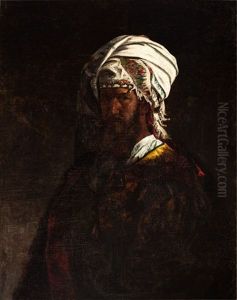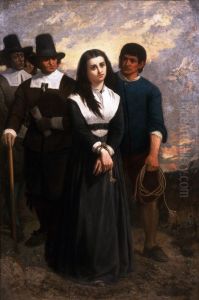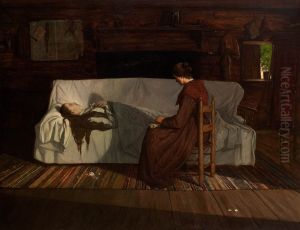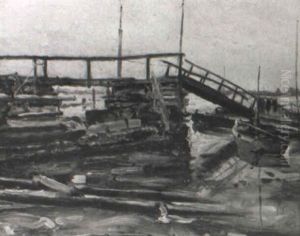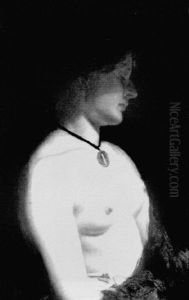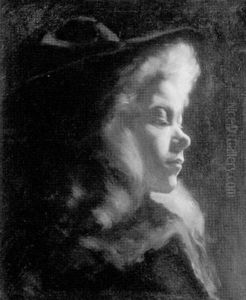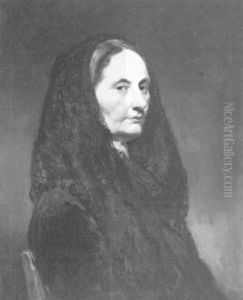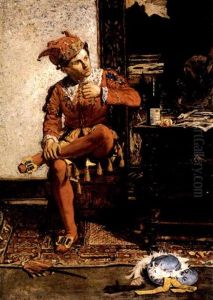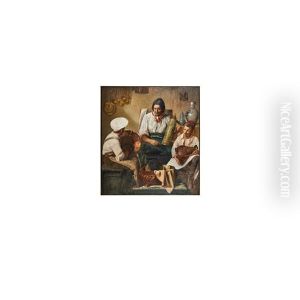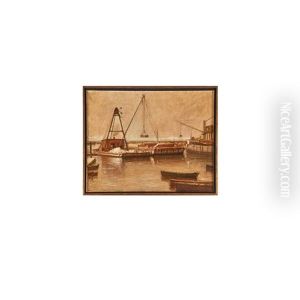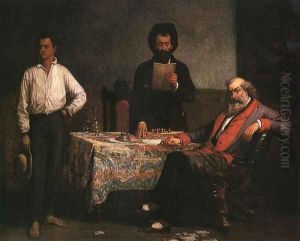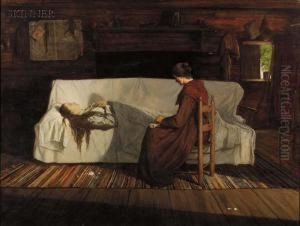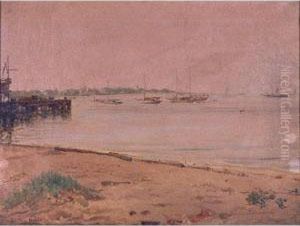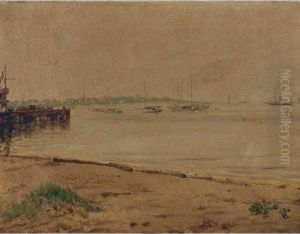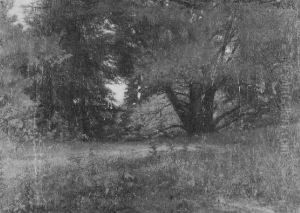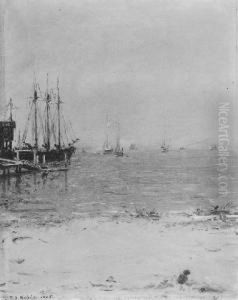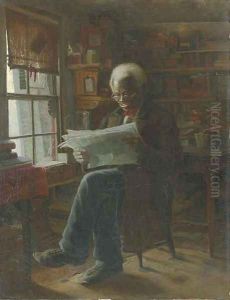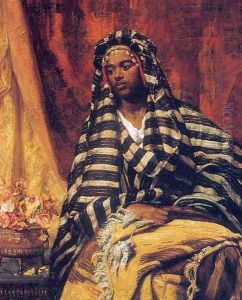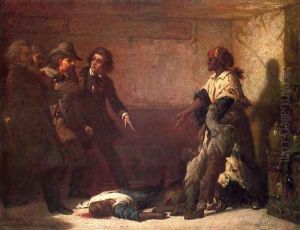Thomas Satterwhite Noble Paintings
Thomas Satterwhite Noble, an American painter born on May 29, 1835, in Lexington, Kentucky, emerged as a significant figure in the world of art during the 19th century. Noble's upbringing in a slave-owning family in the antebellum South profoundly influenced his later works, which often delved into the themes of slavery, the Civil War, and the moral questions of his time. Despite the initial environment he grew up in, Noble's artistic journey led him to adopt and express more progressive views through his art, especially on issues related to slavery and human rights.
Noble pursued his education at Transylvania University before venturing to the prestigious Art Academy of Düsseldorf, Germany, in 1856, where he honed his skills under the tutelage of Emanuel Leutze, a painter famous for 'Washington Crossing the Delaware.' This period was crucial for Noble, as it shaped his technical skills and deepened his appreciation for historical and genre subjects, which would become prevalent in his later works.
Returning to the United States in the late 1850s, Noble settled in St. Louis, Missouri, where he began his career as an artist. However, the outbreak of the Civil War saw him return to Kentucky, where he served in the Confederate Army. This experience provided him with firsthand insights into the realities of war and slavery, which would later become central themes in his art.
After the war, Thomas Satterwhite Noble moved to New York City, where he became actively involved in the art scene and began to gain recognition for his powerful and often controversial paintings. His most notable works from this period include 'The Last Sale of Slaves in St. Louis,' 'Margaret Garner,' a harrowing depiction of an enslaved woman who killed her own daughter rather than see her returned to slavery, and 'John Brown’s Blessing,' which portrays the abolitionist John Brown receiving a blessing before his execution. These works were notable for their emotive portrayal of African American subjects and their stark condemnation of the institution of slavery.
In 1869, Noble was appointed the head of the McMicken School of Design in Cincinnati, Ohio, now part of the University of Cincinnati's College of Design, Architecture, Art, and Planning. His tenure there lasted until his death in 1907. During this period, besides teaching, he continued to paint, shifting his focus slightly towards portraits and landscapes, though he never abandoned the thematic exploration of social issues.
Thomas Satterwhite Noble's legacy is that of an artist who used his platform and skills to challenge the societal norms of his time. His works continue to be studied for their historical value and their contribution to the dialogue on human rights and social justice. Noble passed away on April 27, 1907, in New York City, leaving behind a body of work that remains relevant in discussions about art's power to influence society.
